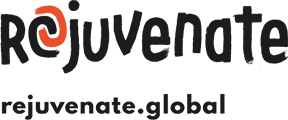post
Inspired by an opportunity to address the urgent needs of vulnerable children in Ethiopia, CHADET was set up in 1995 to develop projects focused on vulnerable children such as orphans, street and working children. This post is based on a conversation between Vicky Johnson and Anannia Sahle Admassu, the current executive director of CHADET.
Anannia speaks about the need for learning and sharing among organisations working with children and young people, explaining that a healthy learning practice among governments, practitioners and researchers can help to accelerate progress, as well as build trust in local communities.
CHADET has a bold mission to inspire effective partnerships through ensuring provision of quality services for vulnerable children. This idea of effective partnership, as we learn from Anannia, encompasses a combination of credible research and addressing urgent development needs of children within communities. For Anannia, community projects will be unsuccessful if people living in communities are not consulted and supported.
CHADET’s experience shows that working locally with parents, teachers, religious leaders, and children themselves, best supports data collection on what needs to be done, both in the short term and long term. The organisation has successfully delivered on projects related to safeguarding of children, child migration, girl’s education and improving children and young people’s livelihoods. Below are some of the lessons shared from the conversation with Dr. Admassu.
The Community-based Child Protection model
Anannia shared with us an interesting model from CHADET’s efforts to listen to communities share their own challenges and seek solution to overcome them. The Community-based Child Protection Committees(CCP) model, for instance, is a locally-grounded structure comprised of parents, teachers, children and other influential community leaders. These people come together to discuss problems but also to mobilise communities and other stakeholders to take action for safeguarding children.
In his opinion, this model helps to reduce the scale of problems before they get out of hand. Citing examples from a project on girl’s education, investigations revealed that fewer girls attended classes compared to boys. The reasons for this were attributed to house hold chores and a lack of safe space within the school for girls on their monthly menstrual periods.
CHADET responded to these challenges using the CCP model, by first working through ‘family hubs’ created for parents, teachers and the affected children to discuss some of these impediments to their education. CHADET also went a step further to provide sanitary towels for the girls and set up sanitary corners and separate toilets for girls and boys. Anannia adds that, in this model, the ideas and solutions come from the children and they themselves as an organisation consider the projects as learning processes.
It takes time
It takes time to build trust in a community and to set up meaningful networks with influential members. These influential members are capable of convincing and persuading their community members to cooperate and adopt new, progressive practices.
Describing a possible time frame for projects like this in CHADET, Anannia explained the reason for a 10-year plan working in the countryside of Ethiopia. Contextually, development projects in Ethiopia take 3-5 years but, in this case, where children are the focus, one must consider the time it will take for adults in the communities to become open to listening to children.
Anannia describes this as difficult to do as children are seen as incapable of making decisions or providing valid opinions. However, he insists that more efforts will have to be made to ensure children are participating and involved as their voices are able to make change happen.
“I have seen it myself …. listening to children’s voices will bring significant change”
Make the circle fuller
Beyond creating awareness on children’s issues in communities, there is a need to address other core needs of communities that reinforce problems for children. Anannia talks about finding mechanisms that ensure that the problems emerging from the research conducted are effectively considered and the communities are supported.
For him, this is how we make ‘the circle fuller’ and ensure that things do not remain the same following our presence and work in a community. This is an effective way to also build trust with local people. In addition to this, he also touched on how the role of partnerships between research institutions, donors and development agencies can be beneficial for the local communities, where data collected is easily used to target those who need the most support.
Demonstrate, visualise and communicate
This brilliantly wraps together Anannia’s ideas on serving vulnerable children in local communities. He emphasises the need to learn from other organisations, and to sustain a healthy practice of sharing evidence of what works and what does not. For him, demonstrating evidence, not only among other organisations, but to governments and influential members of communities helps to show them what works and makes them open to projects in their communities.
Visualisation works hand in hand with a coordination mechanism where local organisations are supported with skills development and training, for example, skills in data compilation and documentation. Communicating evidence is connected to knowledge sharing and learning on research findings as earlier discussed. Anannia sees this as something that must be set up with the government, as allies and not owners, to prevent bureaucratisation. All in all, he recommends a regional platform that brings both powerful and small, local organisations together to drive social change for children especially in East Africa.






